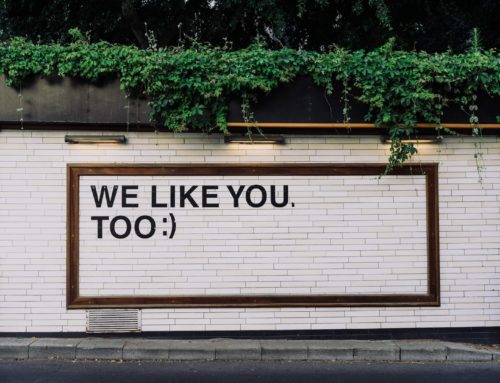There are three myths that concern the way in which our brain works that we need to get out of the way:
- That once we reach adulthood our brains don’t really change.
- That we can separate psychological disorders from chemical ones.
- That “you” are the same thing as your mind.
Now, though it may be true that the hardware of our brain stops developing right around the time we reach our mid-to-late twenties, we retain the ability to shape and sculpt certain areas, long after they are initially established. This concept, something referred to as neural-plasticity,explains the permanent malleability of our brains that can range from taking place on a teeny-tiny cellular level, all the way up to a large-scale rewiring of the way we think, operate, and subsequently live day-to-day.
Think about the last time you chose to take a new route to work; it probably required some studying of the passing road signs, as well as paying increased attention to any unfamiliar traffic lights, stop signs, or pedestrian crossings you might inadvertently miss. Now, what if I told you that you would be physically altering the structure of your brain by doing this? That with every new left or right turn you take, your brain would begin to piece together the stimuli of your whereabouts, and actively start to rewire itself in order to accommodate all the new information?
The truth is, that anytime we see, hear, or do something new — take every moment of our entire lives up until this point, for example — our brain constructs new neural pathways that allow us to engage in a process called learning. Something as simple as taking a different route to work, enables us to expand our cognitive map (i.e. the mental map that we see when we picture the way to get to the living room, the local movie theatre, or even Liberia) and forge new chemical links between these old and new places as they exist in our minds.
The neural pathways in our brain, the ones responsible for forging these chemical links involved in the learning process, can look very very different depending on how often we use them. The ones we use the most are broad and expansive (think: a highway of rush hour traffic), while the ones we use less are narrow and thin (think: a weedy garden path). The ones we don’t use at all get closed off; the brain is wired for efficiency, after all.
Thinking Patterns
Neural pathways, as well as a type of chemical known as neurotransmitters both have an awful lot to do with the way our brain communicates with itself. These chemical hormones such as serotonin, dopamine, oxytocin, norepinephrine, etc., all play a very important role in the regulation of our mental and physical health. In this sense, our brain chemistry can have a direct impact on how we think and how we feel every day. However, the inverse is also true — how we think and feel everyday can, most definitely, also have a direct impact on the chemistry of our brains.
Now, in order to discuss happiness, we need to understand what happens to the brain when a person suffers from a shortage of it, i.e. depression.
There are two particular areas of the brain that become altered in an individual with depression: The amygdala — the part that controls our fight-or-flight and fear responses — is found to increase in size, and the hippocampus — the control center for the regulation of our emotions — is found to decrease and get smaller in size.
What’s MOST fascinating about this, though, is that research has shown that following psychological treatment for depression and a reduction in negative thinking patterns, the hippocampus actually possesses the ability to regrow in size (and, therefore, optimal function). What this means, is that no matter whether a state of unhappiness is brought on by chemical factors or situational ones, such that can be seen with disorders like depression, there is an inextricable link between our thinking patterns, and the physical wiring of our brains… So much so, in fact, that we possess the ability to regain key regulatory functions of the brain, just by no longer suffering with the mental by-products of a disorder (i.e. negative thoughts).
The Power of Awareness
Now, it’s important to understand that there’s a difference between awareness and the mind itself. You are not your mind. You are not even your awareness. YOU are the thing paying attention to it. And guess what? If you can understand how the mind works, and how to positively use the power of attention, then you can harness all its abilities in order to improve your self, your life, and your overall happiness.
Take a second, and try to imagine that your mind is a vast space with many different areas or rooms (maybe like a house, or a hotel). Each of these rooms represents a different emotion, and a different set of neural pathways responsible for processing that emotion. There’s a room for sad, a room for happy, a room for fear, joy, anger, desire, frustration, hope, and anything else you can think of.
Now try to imagine your awareness that exists in your mind. You can think of it as a ball of light. This light can freely wander the hotel and it provides energy to any of the rooms it goes into. It feeds the neural pathways and strengthens them, making the journey into that specific room, and the path to that specific emotion, feel a lot quicker with every time that light enters the room. When your awareness — your light — goes to any one of these areas of the mind, it lights up that area and you become conscious of being in that area. Are YOU angry? No — YOU are not your mind. But your awareness is lighting up your anger area and suddenly you become aware of being angry. The same exact thing applies to happiness, and sadness, and all the other emotions too.
The power here, is that you can use willpower and the art of conscious thought to move your awareness/ball of light into any of the rooms you please. Wherever awareness goes, is where your energy goes, is where your neural pathways get stronger, is where you are more likely to go next time.
This becomes problematic, however, when we allow our circumstance, or perhaps the people around us, to dictate where our awareness is going. As a result, our energy is being restricted to that one area and we’ve relinquished our power of thought to factors outside of our control. How can we be surprised, then, when, as a consequence, we no longer feel like happiness is a personal choice? We’ve already decided it’s not.
Understand that controlling your awareness = controlling your emotions = controlling how your brain is wired.
Re-wiring Our Brains to Be Happier
Now if we interpret (notice I use the word “interpret”) a particular moment to be stressful or threatening, our brain releases adrenaline and cortisol to try and give us the tools to help us survive. The trouble is, that when our bodies react to these chemicals being produced, we experience physiological discomfort (symptoms such as sweaty palms, increased heart rate, and raised blood pressure) that, in turn, makes us feel even more stressed and out of sorts. This process reinforces itself — thanks, neural connections! — thus creating a cycle of stress. It makes sense then, that individuals suffering from depression often have heightened levels of these chemicals in their brain.
But what if we were to take this understanding and apply it to positive emotions? Let’s say we were able to reframe the situation to instead be interpreted (there’s that word again) as being not so stressful. If we could somehow switch our perspective on this event, and see it as something exciting rather than anxiety-inducing, then we can convince our brain to release less of these stress hormones. Less of these hormones means less sweating, and lower heart rate. Lower heart rate means less signals to our body that we have anything to be nervous about.
Well, here is where our thinking patterns come in. They hold the key to the “how” of rewiring our brains for happiness.
When we begin thinking negative thoughts, for instance, and we give our attention to the areas of our mind that contain anger, sadness, and unhappiness, the neural pathways that transmit those messages become strengthened and the tendency for repetition or habituation of these negative thoughts becomes increased as our brains seek the path of least resistance (i.e. our brains gravitate towards the big open highways, not the weedy garden paths).
On the other hand, when we consciously make an effort to perceive a situation as positive, and to direct our attention, our light, to the rooms in our mind that contain joy, gratitude, and happiness, then these become the rooms we are more likely to return to again. By shifting our thoughts into helpful, productive ones, instead of destructive ones, we make sure that the neural connections specific to happiness will be the ones that get to feed, and grow stronger, from our energy. We make sure that these are the rooms we are more likely to visit with our light when the going gets rough, and that we can fall back on our rewired brain during times of temporary unhappiness or depression.
On Unhappiness
Because don’t get me wrong, there is no shortcut to avoiding unhappiness. There will be times of catastrophe, uncertainty and even monumental pain — it is life after all. All we can really hope for is to find a way to minimize the unhappy moments and maximize the happy ones. In this sense, making sure that we’ve done as much of the heavy lifting involved in the task of rewiring our brain, as possible, before our circumstances try to knock us off our feet, is highly recommended. We should be consciously trying to build up these neural pathways to happiness by practicing the art of positive thinking when we’re feeling happy, strong, loved, and successful, NOT when we’re trying to find a quick fix for a bad day.
By taking small moments of inconvenience, or upset, on the chin, and by choosing to shine your light of awareness on the positive of the situation, even when its tempting to do the opposite, you are giving your brain the chance to choose happiness again the next time when it may be just that small bit more difficult.
Time is going to pass whether we make good use of it or not, so we might as well use it to make our future selves just that little bit better as being happy. As cliche as it sounds, try to think positively; it may just change your life.





